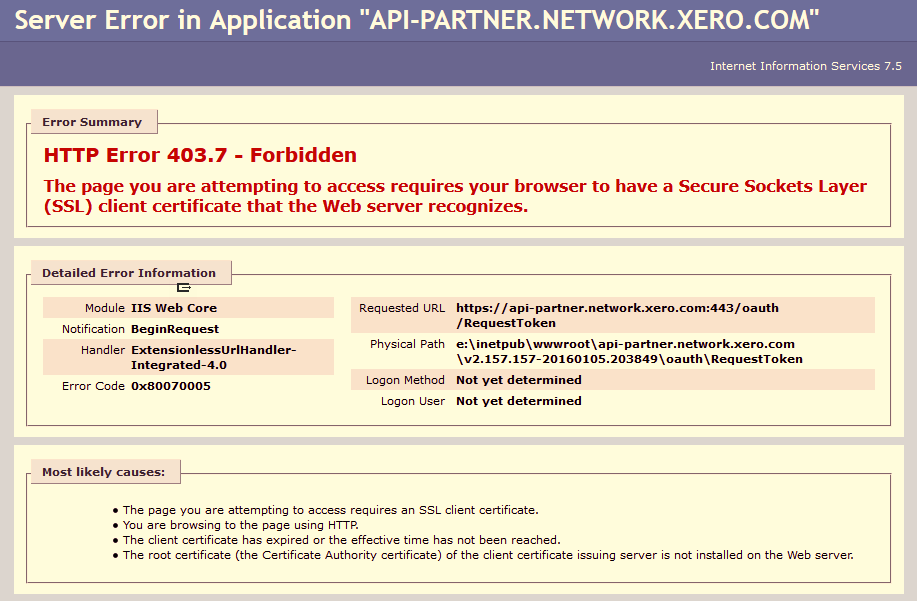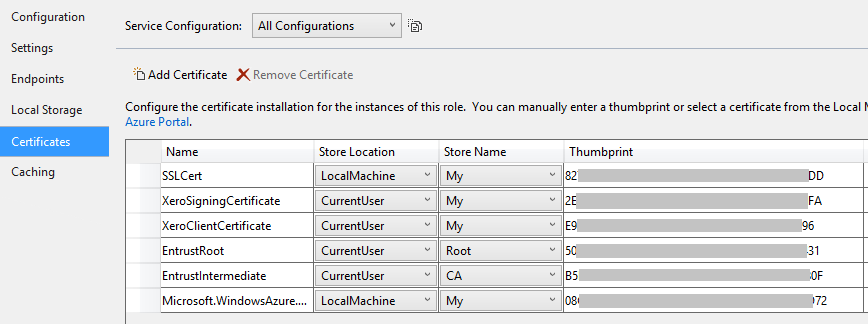I'm integrating my app with Xero which requires two certificates. I uploaded them to Azure with help from this article, but I'm still unable to connect to the Xero API. I'm hoping someone has experience integrating a Xero Partner Application with an Azure Web App.
I've uploaded two pfx files; one is a self-signed certificate and the other is the partner certificate issued by Xero. The latter pfx file contains two certificates; an Entrust Commercial Private Sub CA1 (whatever than means) and a unique Entrust Id certificate for my app.
I'm using the following code to load the certificates by their unique thumbprint:
static X509Certificate2 GetCertificateFromStore(string thumbprint)
{
var store = new X509Store(StoreLocation.CurrentUser);
try
{
thumbprint = Regex.Replace(thumbprint, @"[^\da-zA-z]", string.Empty).ToUpper();
store.Open(OpenFlags.ReadOnly);
var certCollection = store.Certificates;
var currentCerts = certCollection.Find(X509FindType.FindByTimeValid, DateTime.Now, false);
var signingCert = currentCerts.Find(X509FindType.FindByThumbprint, thumbprint, false);
if (signingCert.Count == 0)
{
throw new Exception($"Could not find Xero SSL certificate. cert_name={thumbprint}");
}
return signingCert[0];
}
finally
{
store.Close();
}
}
This works fine locally, but on my azure web site I get a 403.7 error:
The page you are attempting to access requires your browser to have a Secure Sockets Layer (SSL) client certificate that the Web server recognizes.
I've also looked at the following references to try and resolve the issue:
- Xero Partner SSL configuration in Azure (Uses a cloud service and not a web app, so I couldn't follow the steps at the end)
- 403 Forbidden when loading X509Certificate2 from a file (Thread posted on the Xero forums about the same issue, figured out that the resolution is only for once again; cloud services)
- Xero partner connections and Azure Websites (Posted solution suggests using a VM)
What I haven't tried yet:
- Converting my web app to a cloud service; trying to avoid doing this however I'm not sure what steps are involved.
- Using a VM; I haven't found any detailed steps on how to do this but seems like a better option than above.



